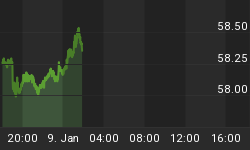The Trump administration is right to worry about the loss of American jobs and to explore the reasons for trade imbalances.
But they are wrong for taking a blanket pop at free trade agreements and saying just because there is a trade imbalance that it is the fault of the agreement.
An article in Bloomberg reporting on recent discussions between U.S. Trade Representative Robert Lighthizer and South Korean Trade Minister Kim Hyun-chong this week illustrates the problem.
Lighthizer vaguely stated the U.S. administration is seeking “substantial improvements” that address the trade imbalance, adding that the U.S. wants to see the free trade agreement (FTA) deal “fully implemented.”
The Korean side and most independent observers are perplexed at what the U.S. actually expects to achieve.
Emissions Standards Too Strict, U.S. Argues
Bilateral trade has surged since KORUS, as the Korean-U.S. trade deal is known, was implemented five years ago. Although there is a trade imbalance, the reality is no two countries will have exactly balanced trade. Balances have more to do with relative competitiveness than a rigged system.
Bloomberg reports that South Korea is the U.S.’s seventh-largest trading partner, while the U.S. is South Korea’s second-biggest partner, after China. U.S. figures indicate its goods deficit with South Korea was $27.7 billion last year, or about $4.4 billion more than the number Korea came up with. The U.S. has cited non-tariff barriers in South Korea’s auto market as an example of the unfairness of the FTA, saying that South Korean emissions standards are too strict.
Honestly, can the U.S. (or anyone else) criticize another country for being too strict on emissions?
Japanese and European manufacturers meet the standards. Perversely enough, U.S. manufacturers comfortably meet the Korean standards — supporters say the FTA has helped U.S. automakers to surpass Japan to rank second in imported autos since 2015.
So, how are emission standards a barrier?
U.S. Points to Steel Dumping
American negotiators also apparently argued that domestic steelmakers are being hurt by South Korean dumping, but Korean steel exports to the U.S. have dropped markedly, along with most other Asian suppliers, following anti-dumping legislation in the U.S.
Seoul argued the bilateral accord is not the cause of the trade imbalance, saying there has been a 30% decline on the year in the country’s trade surplus with the U.S. this year. South Korea says the imbalance it has more to do with foreign exchange rates and relative competitiveness than the trade agreement favouring one side or another.
Intellectual Property Rights and China
Lighthizer is not just taking an aim at South Korea.
In an Economist article, he is reportedly taking China to task on intellectual property rights.
On this, the administration is on much stronger ground. There are countless examples of China forcing firms to share valuable technology in return for access to the Chinese market, only for the technology to be copied and a new state enterprise to spring up producing the same product.
Less blatant examples of simply poaching designs or technology are even more widespread and underline the fact that China cannot play the poor emerging market part and a world power at the same time – they are one or the other. If they are to be taken seriously as a world power, they should behave responsibly on issues like intellectual property.
Lighthizer would be better advised to spend his time fighting justifiable causes like that than trying to beat up South Korea over a free trade deal that by everyone’s estimation, bar the Trump administration, has benefited both countries significantly.
If there is a trade imbalance, it is not down to the lack of tariff barriers.
By AG Metal Miner
















